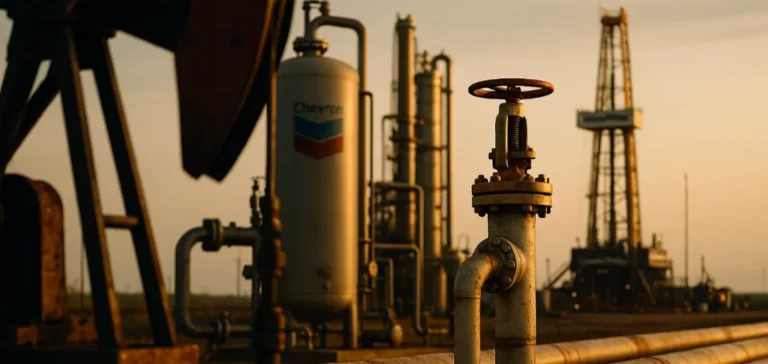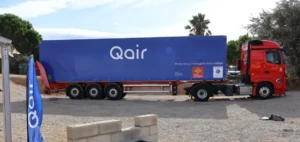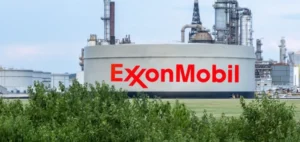The study scope includes forty companies among the largest in terms of proven hydrocarbon reserves in the United States. These companies are divided into three peer groups: “integrated,” “large independents,” and “independents,” depending on whether their activities include refining and marketing. The sample provides a representative indicator of upstream U.S. industry trends and accounts for a substantial portion of the country’s combined oil-gas production. The study details the methodology based on regulatory filings with the United States Securities and Exchange Commission (SEC, U.S. financial markets authority).
Capex and M&A: the shift toward acquisitions
Total capital expenditures (capex) reached US$292.1 billion, an increase of 108% year-over-year, and marked a peak in the five-year period analyzed. The growth stems mainly from mergers and acquisitions (M&A), totaling US$206.6 billion, up 331%. The targeted assets are concentrated in the Permian, Eagle Ford, and Bakken basins. This shift is evidenced by a renewed focus on acquiring unproven assets, representing 42% of acquisition value — the highest level of the period, signaling interest in future drilling inventories.
Breakdown by category confirms the drop in exploration spending to US$5.7 billion (–49%) and a slight decrease in development spending to US$79.8 billion (–2%). At the same time, the number of development and exploration wells drilled increased by 3% in aggregate, illustrating continued portfolio drilling campaigns while reallocating part of the capital externally. The plowback (plowback percentage, ratio of capex to netback — netback = revenue minus production costs) reached 179%, up from 82% a year earlier, mathematically reflecting the surge in acquisitions integrated into the denominator through the use of shares as a means of exchange.
Revenue, costs, and earnings: a controlled landing
Aggregate revenue for the studied companies stood at US$235.5 billion (–3%), with pre-tax income at US$74.8 billion (–10%). Impairments totaled US$2.1 billion and remained below US$3.0 billion annually since 2021. Production costs per barrel of oil equivalent (BOE) stood at US$11.85/BOE, nearly flat (+1%) year-over-year; the study notes this stability across all peer groups.
By peer group, 2024 unit costs were US$12.79/BOE for integrated companies, US$11.36/BOE for large independents, and US$11.97/BOE for independents. The study highlights that this is the first time over the five-year period that the trajectory of unit costs diverged from that of spot prices, reflecting efficiency efforts taking shape amid consolidation.
Oil: reserves up, flows driven by acquisitions
Proven oil reserves for the sample reached 34,664 million barrels (+5% year-over-year). Drivers of change include 5,247 million barrels of purchases, 3,687 million barrels of extensions and discoveries, 65 million barrels of improved recovery, a positive net revision balance of 0.5 billion barrels, 3,471 million barrels of production, and 4,428 million barrels of divestitures. The 2024 dynamic is marked by the weight of acquisitions exceeding that of organic growth.
Oil production for the sample peaked for the period at 3.5 billion barrels, up 3% year-over-year. The “top” table shows ConocoPhillips leading in oil reserves (3,986 million barrels), followed by ExxonMobil (3,279 million) and EOG Resources, Inc. (3,226 million). In production, Chevron Corporation (422 million barrels) leads ConocoPhillips (381 million) and ExxonMobil (317 million). The sharpest production increases are tied to external growth operations completed during the year.
Oil: SEC prices and revision sensitivity
The SEC price of West Texas Intermediate (WTI, U.S. benchmark crude), calculated as the arithmetic average of the first day of each month, declined from US$78.21/b to US$76.32/b (–2%). This change led to negative revisions for some operators, while others posted positive technical revisions related to infill drilling and reservoir performance re-evaluations. The largest positive revisions came from ConocoPhillips (+317 Mbbl), BP p.l.c. (+144 Mbbl), Ovintiv Inc. (+132 Mbbl), Occidental Petroleum Corporation (+115 Mbbl), and EOG Resources Inc. (+102 Mbbl). The most significant negative revisions affected ExxonMobil (–176 Mbbl) and Diamondback Energy, Inc. (–103 Mbbl).
The average Proved Reserve Acquisition Cost (PRAC) rose to US$12.77/BOE, up 12% year-over-year and 161% since 2020. The PRAC gap between peer groups is notable: on a three-year average, that of integrated companies exceeds by more than 75% the PRAC of large independents and independents, reflecting premiums paid during megadeals. For reference, 2024 PRAC stood at US$25.32/BOE for ExxonMobil, US$13.56/BOE for Diamondback Energy, Inc., and US$15.50/BOE for ConocoPhillips.
Natural gas: reserves retreat, price-cost trade-offs
Proven gas reserves stood at 182 Tcf (182,002 Bcf), down 4% year-over-year, after peaking at 201 Tcf in 2022. Changes include 16,276 Bcf in extensions and discoveries, 24.7 Tcf in purchases, 27.2 Tcf in divestitures, and a net negative revision balance of 6.5 Tcf, mainly due to the SEC price of Henry Hub (US$2.07/MMBtu vs. US$2.59/MMBtu, –20%). The MMBtu (million British thermal units) is the reference unit for gas in the study.
Gas production totaled 15.7 Tcf (–5%), with the decline attributed to depressed prices and reduced activity in the Haynesville, which is more sensitive to full-cycle costs. Over the five-year period, aggregate gas production rose 17%, but contribution by group diverged: +115% for large independents, +10% for integrated companies, and –48% for independents. Large independents represent 60% of the panel’s gas production.
Natural gas: production replacement and downstream demand
Production replacement rates show contrasting trajectories. Including all sources, gas reached 139% in 2024. The “F&D” (finding and development) rate excluding revisions stood at 104% overall, while F&D including revisions remained below 100% due to net negative technical revisions. By peer group, “all sources” rates were 270% for integrated companies, 219% for large independents, and 78% for independents.
The study links the increase in “all sources” replacement rates for gas to intensified acquisitions and a refocus on gas to capture both near- and long-term demand for liquefied natural gas (LNG), as well as anticipated domestic demand from expanding data centers driven by the rise of artificial intelligence (AI). These elements are documented as sectoral factors without presuming specific geographic trajectories or unpublished investment timelines.
Shareholder returns and cash allocation trade-offs
Aggregate dividend and share buyback distributions by large independents and independents declined by 25% to US$29.2 billion. Relative to netback, these returns stood at 31% for large independents (down from 36%) and 17% for independents (down from 18%). However, these levels remain above those observed in 2020–2021.
Meanwhile, the portion of netback allocated to exploration and development spending slightly decreased for independents (from 60% to 56%) and remained stable for large independents (50%). The study notes that many M&A transactions were settled primarily with shares, allowing shareholder distribution levels to be maintained while increasing total investment effort.
Dominant players and structuring transactions
In 2024, ExxonMobil was the largest acquirer of assets (US$84.5 billion across proven and unproven), ahead of Diamondback Energy, Inc. (US$36.8 billion) and ConocoPhillips (US$23.4 billion). For proven assets alone, the five highest amounts were seen at ExxonMobil (US$39.271 billion), Diamondback Energy, Inc. (US$21.275 billion), ConocoPhillips (US$12.415 billion), Expand Energy Corporation (US$10.010 billion), and Occidental Petroleum Corporation (US$8.963 billion). For unproven assets, ExxonMobil (US$45.196 billion) led Diamondback Energy, Inc. (US$15.568 billion) and ConocoPhillips (US$10.985 billion). In exploration, Devon Energy Corporation (US$690 million), BP p.l.c. (US$655 million), and ConocoPhillips (US$646 million) formed the top trio, while in development, ExxonMobil (US$10.906 billion), Chevron Corporation (US$9.334 billion), and ConocoPhillips (US$9.109 billion) led the rankings.
Oil reserve acquisition and divestiture flows illustrate the role of megadeals: 5.2 billion barrels acquired (including 1,171 million by Diamondback Energy, Inc., related to Endeavor Energy Resources L.P., and 877 million by ExxonMobil, related to Pioneer Natural Resources Company) and 4.4 billion barrels sold, mainly due to panel consolidation (Pioneer, Southwestern, Marathon Oil, Callon, SilverBow, and Enerplus coming under the control of other companies included in the 2025 edition).
Scope, methodology, and coverage
The 2025 scope is limited to forty companies, down from fifty in previous editions, in line with intensified consolidation. Despite this reduction, coverage remains consistent, with the sample representing approximately 41% of combined U.S. production for the year studied. Peer group definitions remain unchanged: integrated companies span upstream and downstream, independents focus on upstream, and “large independents” exceed one billion BOE in global reserves at year-end.
The gas ranking highlights the importance of EQT Corporation, first in reserves (24,545 Bcf) and production (2,086 Bcf) in the 2024 panel, while acquisition effects explain year-over-year changes in the ranking of top holders and producers. The table also includes ExxonMobil, Range Resources Corporation, Antero Resources Corporation, and for production, Coterra Energy Inc. and Chevron Corporation among the highest volumes.
Operational benchmarks for investment committees
Findings from the EY study outline a clear trade-off: increased consolidating capex, stabilized unit costs, oil reserves growth driven by acquisitions, and gas reserves retreat linked to the decline in the SEC price. “All sources” replacement rates are higher for gas than oil, partly due to acquisitions, while shareholder returns are normalizing without disappearing. Geologic zones targeted by deals show a preference for abundant drillable inventories, with a higher share of unproven assets. Standardized series and definitions (SEC, WTI, BOE, PRAC, netback, F&D) offer a consistent reference for financial analysis and industrial planning.






















